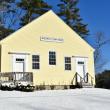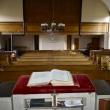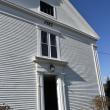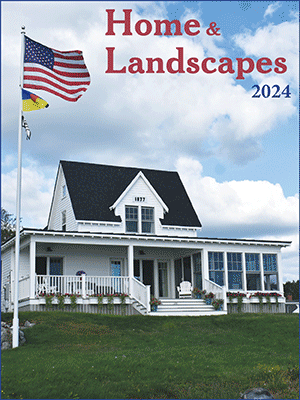A little of this, a little of that about Woolwich
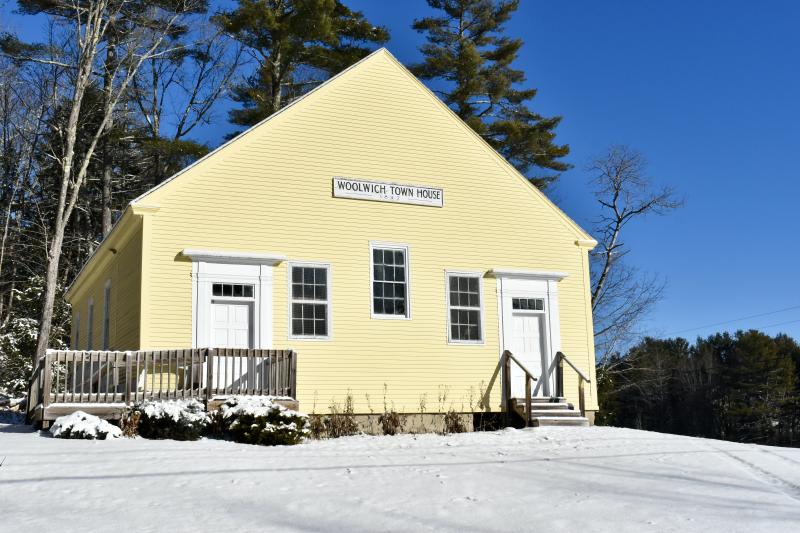 The Town House was built during President Jackson’s administration in 1837 and is on the corner of the Old Stage and Dana Mills roads. Woolwich’s town meetings were held here until 1951, moving across town to the elementary school in 1952. PHIL DI VECE/Wiscasset Newspaper
The Town House was built during President Jackson’s administration in 1837 and is on the corner of the Old Stage and Dana Mills roads. Woolwich’s town meetings were held here until 1951, moving across town to the elementary school in 1952. PHIL DI VECE/Wiscasset Newspaper
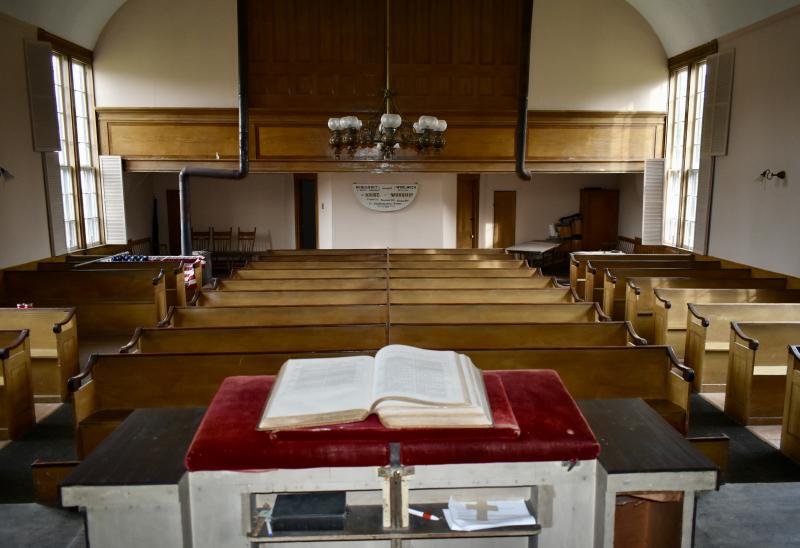 View from the pulpit of Nequasset Meetinghouse. Although no longer used as a church it continues to be opened for community gatherings. PHIL DI VECE/Wiscasset Newspaper
View from the pulpit of Nequasset Meetinghouse. Although no longer used as a church it continues to be opened for community gatherings. PHIL DI VECE/Wiscasset Newspaper
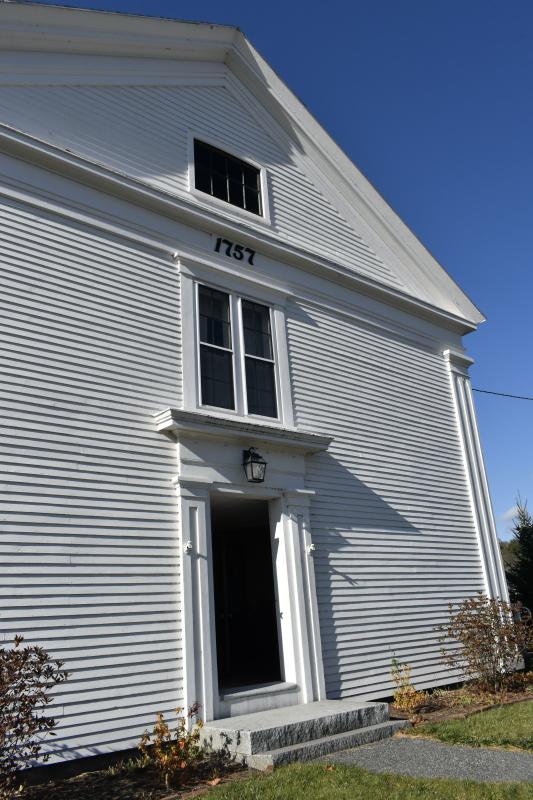 Along with once being a house of worship the Nequasset Meetinghouse erected in 1757 was where Woolwich held its early town meetings. PHIL DI VECE/Wiscasset Newspaper
Along with once being a house of worship the Nequasset Meetinghouse erected in 1757 was where Woolwich held its early town meetings. PHIL DI VECE/Wiscasset Newspaper
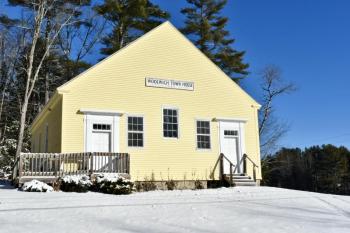 The Town House was built during President Jackson’s administration in 1837 and is on the corner of the Old Stage and Dana Mills roads. Woolwich’s town meetings were held here until 1951, moving across town to the elementary school in 1952. PHIL DI VECE/Wiscasset Newspaper
The Town House was built during President Jackson’s administration in 1837 and is on the corner of the Old Stage and Dana Mills roads. Woolwich’s town meetings were held here until 1951, moving across town to the elementary school in 1952. PHIL DI VECE/Wiscasset Newspaper
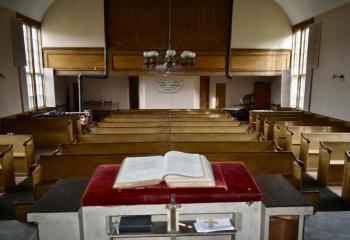 View from the pulpit of Nequasset Meetinghouse. Although no longer used as a church it continues to be opened for community gatherings. PHIL DI VECE/Wiscasset Newspaper
View from the pulpit of Nequasset Meetinghouse. Although no longer used as a church it continues to be opened for community gatherings. PHIL DI VECE/Wiscasset Newspaper
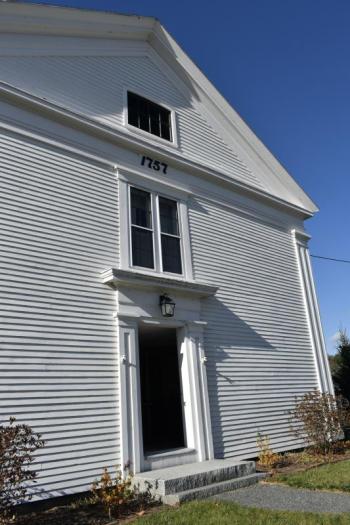 Along with once being a house of worship the Nequasset Meetinghouse erected in 1757 was where Woolwich held its early town meetings. PHIL DI VECE/Wiscasset Newspaper
Along with once being a house of worship the Nequasset Meetinghouse erected in 1757 was where Woolwich held its early town meetings. PHIL DI VECE/Wiscasset Newspaper
In just a few months the town of Woolwich will hold its 265th annual town meeting. That’s a pretty remarkable feat considering how fleeting almost everything else has become these days. Woolwich was first settled back in the 1600s, splitting from nearby Georgetown in 1759 and finally gaining status as a town from the Massachusetts General Court August 23, 1775.
Geographically, the community’s borders haven’t changed much in the past century. Here’s how writer/historian George Jones Varney described it in his “Gazetteer of the State of Maine” published in 1881: “Woolwich is situated in the eastern part of Sagadahoc County, adjoining Lincoln County. It is separated from Bath by the Kennebec River, from Arrowsic and Georgetown by Back River and Monsweag Bay, and by Monsweag River from Wiscasset on the east. The extreme length of the town from north to south is about 8.5 miles, and the width from east to west is near 5.5 miles. The area is 20,000 acres. The surface is much broken by low hills and projecting ledges, but has no great extent of low or marshy land… Nequasset Pond, situated a little south of the center of the town, is a beautiful sheet of water. Its length is about two miles, and its width varies from half to three-fourths of a mile.”
That pretty much describes Woolwich the way it is today. Missing from Varney’s points of interest are the “Great Swamp," a portion of which can be seen from Route One, and “Whaleback Ridge," a sprawling hill off Old Stage Road, rising approximately 150 feet at its highest point. Nobody seems to remember how Whaleback Ridge got its name, it’s been called that for more than a hundred years. Perhaps the early settlers began calling it that because of its shape which would have been more prominent when this was cleared pasture land in the 1800s.
In his description of Woolwich Varney includes a colorful story how “Hockomock Head,” a 50-foot bluff overlooking Back River, got its unusual name. “During the Indian wars,” Varney begins, “some Indians who had been committing depredations in Wiscasset were pursued, and one, said to have been a chief, was closely followed up this narrow bluff to its precipitous front.” Firing his flintlock rifle a final time, the native cried "HOCKOMOCK!" threw his gun down, and leaped headfirst from the cliff into the roiling waters below. From that time hence the place has been known as Hockomock Head. According to Varney there was some truth to the legend when years later a rusted French-made rifle was discovered here lodged within a rocky crevice. Another slightly different version of how Hockomock Head got its name appears within historian Rufus King Sewall's book, “Ancient Dominions of Maine." Sewall, who by the way lived in Wiscasset, published his book 22 years earlier. The way he tells it, it was the natives who were chasing the settlers up the high bluff, the Colonials hoping to use the hill as a stronghold. As the story goes during the scramble to the summit, a heavy-set Scotsman fell behind from the others and within the grasp of one of the pursuing natives “whose outstretched hand laid hold to his flowing head of hair.” To the native’s shock the man’s hair, a wig, came away in his hand which he threw away in horror shouting at the top of his lungs, "Hockomock! Hockomock!" According to Sewall the word meant evil spirit or devil.
Still another meaning of Hockomock can be found within a much later book, “Indian Place Names of New England” compiled by author/researcher John C. Huden and published in 1962. Huden writes Hockomock or, “Hobbomocka,” in the Abnaki tongue translates to a "hellish place" or "hell gate." This is interesting when you consider not far from Hockomock Head and Hockomock Point are two narrow, swift-moving river channels known as Upper and Lower Hell’s Gate.
Well, I got off on a bit of a tangent there. Initially, I intended writing about an annual Town Report for Woolwich I had come across for the year ending Feb. 14, 1919. What surprised me about this was seeing the annual town meeting that year was scheduled for a Monday morning beginning at 10 a.m. Aside from that, the business to be decided was much the same as town meetings of today. The first item on the 35-article warrant was to choose a moderator. The proceedings continued with the election of a town clerk for the ensuing year, followed by a treasurer/tax collector and a three-member selectboard. (Woolwich now elects its five-member selectboard at the General Election in November; the selectboard hires the town clerk, tax collector/treasurer and town administrator.)
The voters of yesteryear were next asked what monies they wanted to be spent for the operation of the town. Woolwich then had eight public schools to support. There were also repairs for roads and bridges, and maintenance of cemeteries to consider. Other articles sought funds for improvements to the fishway at Nequasset Pond and a proposal to construct a vault at the Town House to be used for the safekeeping of town records. No dollar amounts were given for any of the articles each stating: “To see what sum of money the town will raise ..." The appropriations recommended by the selectboard and school committee were listed on a separate page of the town report, for example: $300 was requested for repairs to schools, $700 for support of the poor and indigent, and $600 for the town debt and accrued interest. The largest amount, $2,600, was for care and maintenance of roads and bridges. Something else of interest was a recommendation to raise $500 to be used for the eradication of brown tail moth from highways and parks. Obviously, these present-day pests have been around a long, long time.
Included in the 1919 Town report was a statement from Fish Commissioner G. S. Dodge stating the alewives catch totaled 116,835 fish which were sold to Nickerson Bros. at 22 cents a hundred! The alewives are still making their way up Nequasset Creek and Woolwich’s Fish Commission is still going strong today. This past year a record 215,640 alewives were harvested. Today many of the fish are sold for bait, although some are smoked, salted and sold to customers who make a tasty meal of them.
Woolwich’s 1919 appropriations for the operation of the schools and town totaled $7,990 leading me to surmise the selectboard’s aim was to keep the town budget under $8,000. They made it with $10 to spare. The present Woolwich selectboard will be interested in seeing the town budget included paying $1,698.93 in taxes to the State of Maine, and another $591.77 to Sagadahoc County Commissioners.
Many Maine communities gave up on holding an annual town meeting years ago. Among them was Wiscasset, which holds a referendum to consider its school and town budgets. David King Sr., Woolwich’s longtime selectboard chairman, has often referred to the town meeting as the purest and truest form of democracy. “Everyone that attends town meeting has the opportunity to speak to any and all of the articles.”
Phil Di Vece earned a B.A. in journalism studies from Colorado State University and an M.A. in journalism at the University of South Florida. He is the author of three Wiscasset books and is a frequent news contributor to the Boothbay Register/Wiscasset Newspaper. He resides in Wiscasset. Contact him at pdivece@roadrunner.com




